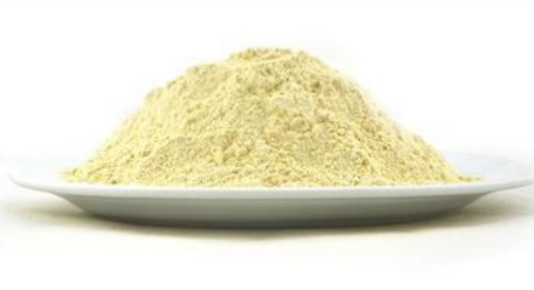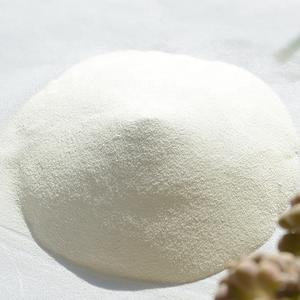1. Introduction
In the past 48 hours, consumer advocacy groups have reignited discussions around common cosmetic ingredients following new EU regulatory proposals targeting certain sulfates in rinse-off products. Among these, sodium lauryl sulfate (SLS)—also known as sodium dodecyl sulfate—has drawn renewed attention due to its widespread use and polarizing reputation. As consumers increasingly scrutinize product labels, understanding what SLS is, how it functions, and how it compares to alternatives like decyl glucoside or sodium cocoyl isethionate has become essential.

Sodium lauryl sulfate is a synthetic anionic surfactant prized for its powerful foaming and cleansing properties. Found in everything from toothpaste to industrial cleaners, SLS exemplifies how surfactant chemistry bridges household convenience and scientific complexity. This article delivers a detailed, science-backed overview of SLS, its variants, and its place among modern surfactants.
2. What Is Sodium Lauryl Sulfate?
Sodium lauryl sulfate (SLS), chemically identical to sodium dodecyl sulfate, is an anionic surfactant derived from lauryl alcohol—often sourced from coconut or palm kernel oil. Its molecular structure features a hydrophobic 12-carbon tail and a hydrophilic sulfate head, enabling it to reduce surface tension between liquids or between a liquid and solid.
The meaning of surfactant lies in its name: ‘surface-active agent.’ Surfactants like SLS work by aligning at interfaces, allowing oil and water to mix—a critical function in detergents, emulsifiers, and wetting agents. In personal care, SLS creates rich lather; in agriculture, it acts as a surfactant for herbicides, enhancing leaf penetration.
3. Common Names and Confusions
SLS appears under many names on ingredient lists, including sls sodium lauryl sulfate, na lauryl sulfate, natrium lauryl sulfate, and lauryl sulfate. It is frequently confused with sodium laureth sulfate (SLES), also called sodium lauryl ether sulfate or sodium lauryl ether sulphate. While both are anionic surfactants, SLES is ethoxylated—meaning it contains ethylene oxide units—which makes it milder but introduces potential contamination concerns (e.g., 1,4-dioxane).

Note that sls sodium laureth sulfate is a misnomer; SLS and SLES are distinct compounds. Similarly, ammonium lauryl sulfate (or ammonium dodecyl sulfate) is another anionic variant often used in shampoos.
4. Types of Surfactants and Where SLS Fits
Surfactants are categorized by their ionic charge:
- Anionic surfactants (e.g., SLS, sodium dodecylbenzene sulfonate, sodium coco sulfate): negatively charged; excellent cleaners and foaming agents.
- Cationic surfactants (e.g., cetyl trimethyl ammonium bromide or CTAB): positively charged; used as conditioners and antimicrobials.
- Non-ionic surfactants (e.g., polysorbate 80, Span80, Pluronic 127, Poloxamer 188, ethoxylated alcohols): no charge; valued as emulsifiers and wetting agents.
- Amphoteric surfactants (e.g., cocamidopropyl betaine, also called coco betaine or amidopropyl betaine): charge varies with pH; mild and often paired with SLS to reduce irritation.
SLS is a classic anionic surfactant. Its strong cleansing power comes at the cost of potential skin irritation, which is why formulators often blend it with amphoteric or non-ionic co-surfactants like coco glucoside or decyl glucoside.
5. Alternatives and Bio-Based Options

Due to consumer demand for gentler and more sustainable ingredients, many brands now replace SLS with alternatives:
- Alkyl polyglucoside (e.g., decyl glucoside, coco glucoside): non-ionic, derived from sugar and fatty alcohols; biodegradable and mild.
- Sodium lauroyl sarcosinate and lauroyl sarcosinate: anionic amino acid-based surfactants with good foaming and low irritation.
- Sodium cocoyl glutamate and sodium cocoyl isethionate: bio surfactants offering creamy lather without harshness.
- Sodium lauroyl methyl isethionate: a newer, ultra-mild anionic surfactant gaining popularity in premium cleansers.
These bio surfactants appeal to eco-conscious markets and are increasingly supplied by specialty chemical firms like Rohit Surfactants Private Limited.
6. Industrial and Agricultural Applications
Beyond cosmetics, SLS serves as a lawn wetting agent and surfactant for weed killer formulations. When mixed with herbicides like glyphosate, it improves coverage and absorption—functioning similarly to lignin sulfonate or methylated seed oil in agricultural adjuvants.
In labs, SLS is used in protein denaturation (e.g., SDS-PAGE), while other surfactants like sodium deoxycholate or fluoro surfactants serve niche roles. Copper 1 bromide and sodium oleate represent less common but specialized surfactant-related compounds.
7. Safety and Misconceptions
Despite viral claims, SLS is not carcinogenic. Regulatory bodies like the FDA and EU SCCS deem it safe in rinse-off products at typical concentrations (≤1–2%). However, it can cause irritation in sensitive individuals, especially at high doses or in leave-on products.
Contrary to confusion with pulmonary surfactants (which reduce alveolar surface tension in lungs), SLS has no biological role in respiration. Pulmonary surfactants are phospholipid-protein complexes produced by type II alveolar cells—not to be conflated with synthetic detergent surfactants.
8. Conclusion
Sodium lauryl sulfate remains a cornerstone of surfactant technology due to its efficacy, low cost, and versatility. While alternatives like alkyl polyglucosides and amphoteric betaines offer milder profiles, SLS continues to play a vital role across industries—from sodium lauryl ether sulphate in shampoo to surfactant non ionic blends in crop protection. Understanding its chemistry, classifications, and context among anionic, cationic, and non-ionic systems empowers informed choices for both formulators and consumers.
Our Website founded on October 17, 2012, is a high-tech enterprise committed to the research and development, production, processing, sales and technical services of ceramic relative materials such as Understand. Our products includes but not limited to Boron Carbide Ceramic Products, Boron Nitride Ceramic Products, Silicon Carbide Ceramic Products, Silicon Nitride Ceramic Products, Zirconium Dioxide Ceramic Products, etc. If you are interested, please feel free to contact us.


